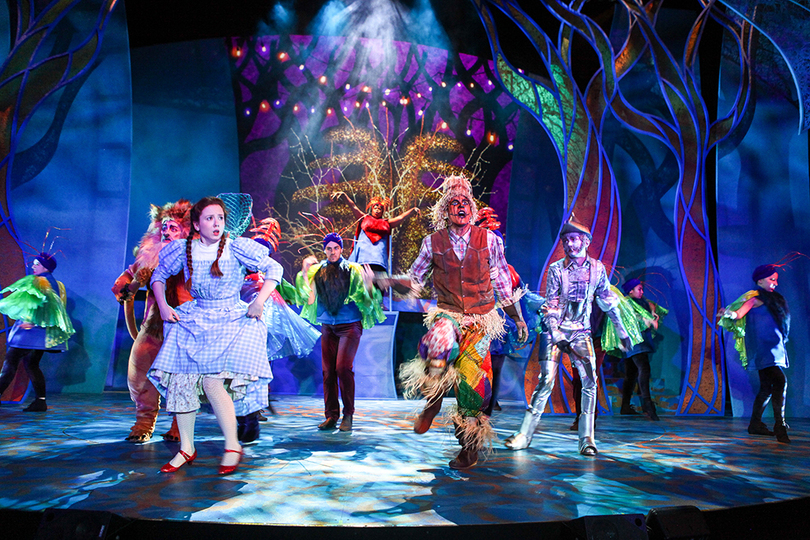In central New York, arts organizations try to remain optimistic amid potential budget cuts

Courtesy of Syracuse Stage
Since Trump's decision to gut federal funding for the arts nearly a year ago, local organizations are looking elsewhere for support.
UPDATED: Jan. 19 at 12:30 p.m.
Almost a year after the Trump administration first announced a plan to cut federal funding for the arts, central New York-based cultural organizations are continuing to operate despite some uncertainty about potential funding obstacles.
Light Work Gallery, Syracuse Stage and the Onondaga Historical Association have benefited from the National Endowment for the Arts, and radio stations like Syracuse University’s WAER and the State University of New York at Oswego’s WRVO have been funded, in part, by Community Service Grants from the Corporation for Public Broadcasting.
The administration’s full 2018 budget proposal, released in May 2017 and passed in October, included cuts to “nearly all of the $971 million funding for four cultural agencies,” including the National Endowment for the Arts and the Corporation for Public Broadcasting, according to The Washington Post.
The visual and aural arts in central New York have obtained portions of their funding from both the NEA and CPB since both organizations began in the 1960s, according to Syracuse.com. Several members of the Syracuse art community said putting this funding on the chopping block has only served to underscore the importance of the arts.
Stephen Butler, executive director at CNY Arts, said he thinks the funding question has more than just fiscal implications.
“Symbolically, when the government sends a message that funding the arts is not important, then the corporations and foundations tend to follow suit to a certain extent,” Butler said. “So, whether or not (organizations) are relying on the actual dollars in the government funds, the message is equally important and creates an equal hardship.”

Central New York organizations, including Syracuse Stage and museums across the region, may notice little to no effects this year. Shows and exhibitions are planned almost a year ahead, so funding has been secured and budgets have been set, said Joseph Whelan, director of marketing and communications at Syracuse Stage.
There are doubts this budget will have any significant effect on more established organizations. Syracuse Stage, which has a budget of about $6 million per year, has received about $70,000 from the NEA over the last decade, Whelan said.
Whelan said Syracuse Stage is supported on some level by the NEA but is supported by the New York State Council on the Arts to a much greater degree.
“People who are trying to give ballet classes in rural Oklahoma, people who are trying to keep small museums open in town — these are the people who the NEA can make a real difference with,” Whelan said.
While he may be optimistic about the future of Syracuse Stage, he said not every organization is in a position to feel the same way.
Butler, the executive director at CNY Arts, said there has been a long-term debate about government funding of the arts.
“So it’s not really a matter of fiscal responsibility as much as it is adhering a policy point of view,” Butler said.
There have been some efforts to assuage budget cuts, and artists living in socially conservative parts of the country sometimes receive grants. But liberal-leaning cities receive the most funding, with arts groups in New York City topping the list, according to The New York Times.
Shane Lavalette, the director of Light Work, said seemingly tragic things can create positive change.
“It’s clearly not an administration that holds the arts in high regard, and yet the arts are such a significant part of America’s identity,” he said in an email. “Artists have always discussed social and political issues in their work, but at the moment it seems to be driving the arts in a way that we may not have seen for some time.”
When the government message that the arts are not important, it only seems to amplify the importance of the arts, especially for central New York, Whelan said.
“The arts humanize us,” he said. “The arts are the only place you can come and see your life represented, the lives of others represented in a way that connects you to them.”
CORRECTION: In a previous version of this post, Stephen Butler’s response to government funding of the arts was misstated. Butler said there has been a long-term debate about government funding of the arts. The Daily Orange regrets this error.




